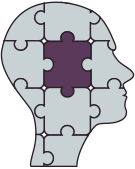Welcome!
The Partnerships for International Research and Education (PIRE) grant awarded to the Center for Language Science at Penn State trains a diverse workforce of language scientists in the STEM workforce, to conduct basic and applied behavioral and neuroscience research. Our PIRE work involves domestic and international collaborations and aims to translate basic science in global contexts.
What is PIRE?
Recognizing the value of international partnerships in addressing critical science and engineering questions, the National Science Foundation (NSF) established the Partnerships in International Research and Education (PIRE) program in 2005. PIRE is an NSF-wide program that supports international activities across all NSF supported disciplines. The primary goal of PIRE is to support high quality projects in which advances in research and education could not occur without international collaboration. PIRE seeks to catalyze a higher level of international engagement in the U.S. science and engineering community. It promotes excellence in science and engineering through international collaboration and facilitates development of a globally-engaged, U.S. science and engineering workforce. Read more at on the NSF’s website.
For Students
PIRE students will conduct innovative research on bilingualism at leading collaborating institutions in Europe, Latin America, and Asia. PIRE fellows will receive an all-research-related-expenses paid trip abroad in order to work on a language science research project.
For Partners
Our PIRE team consists of over 60 individuals from universities in both the United States and abroad. The link below provides a means to access each individual’s bio, current projects, and possible collaboration. Find out who’s talking to who!


